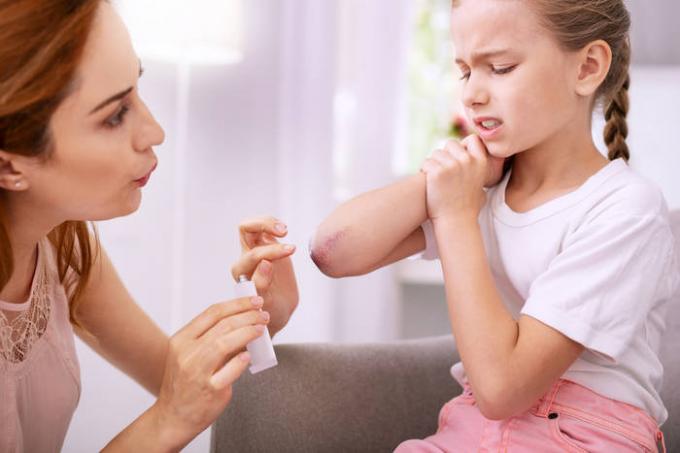You will be surprised and sometimes irritated look at the children who manage to find a problem is literally out of the blue? Think of yourself! Fracture or a strong bruise - it is also the experience, and it is very painful!
The causes of injuries are varied: falling in the plain, and from a height, injured by sharp objects, burns, blows on the objects and subjects. And many kids get injured while under the control of the care of parents. Do not panic. Provide your child a skilled medical assistance and help to realize that life is made up of just such strength test. And that's OK!
How to distinguish a fracture from injury
The symptoms of bruises, sprains and fractures are mostly similar. This is a strong pain and the occurrence of tumors in the damaged areas.
And yet each of these injuries has its own characteristics, the knowledge of which allows you to if you do not make a diagnosis, or at least make the first assumption and provide competent first aid.
- Bruising - is damage to the skin, subcutaneous tissue or muscle without apparent violation of their integrity. Symptoms of injury are similar to the symptoms of a closed fracture. The same severe pain at the time of injury, the occurrence of edema, sometimes - hematoma.
- Little difference is a reduction in pain intensity within 2-3 hours. However, the self-ruled out a fracture is not necessary. This can only be done by the doctor.
- What to do if you are in doubt of the diagnosis? If you suspect a fracture of limbs need to splint the arm or leg, make the cold to the fault and immediately consult a doctor. Often, to put the correct diagnosis, it is necessary to resort to the help of X-ray or CT scan.

How to distinguish a fracture from injury: first aid for injuries / istockphoto.com
types of fractures
the rate of recovery depends on the overall health of the child and the type of fracture:
- Open fracture - with soft tissue damage and skin;
- Closed - with bones shift and without bias;
- Boundary, cross, spiral, oblique, comminuted, longitudinal - depending on the fracture line.

How to distinguish a fracture from injury: first aid for injuries / istockphoto.com
signs of fracture
- The emergence of severe pain at the time of injury. A distinctive feature of the pain at the break: she has been simmering for several hours or even increases over time.
- Having a strong swelling and sometimes bruising. However, it should be borne in mind that some types of fractures (eg, the so-called impacted) are not accompanied by edema.
- Restricting the mobility of the limbs: fist on the broken arm is not compressed, to rely on the broken leg is impossible. Again, the exception to the rule with a broken fibula, for example, there are no restrictions in the movement is not observed.
- Extending or, on the contrary, the shortening of the limbs, if there was a displaced fracture. This is one of the most obvious signs of a fracture that does not allow to confuse it with the usual injury.
- Sometimes a fracture at the time of occurrence is accompanied by the crunch of bones. The same sounds can be heard, to feel if the injured limb. This so-called crepitus. But it happens not always, but only in cases where the bone is not "shifted" soft tissue.

How to distinguish a fracture from injury: first aid for injuries / istockphoto.com
Do not attempt to check availability crepitations - it will exacerbate the situation as fraught with bias bones, nerve damage, vascular, soft tissue. Necessarily in a strong contusion or fracture contact with the child to the emergency room.
Also you will be interested to read this: signs and symptoms of heat injuries

